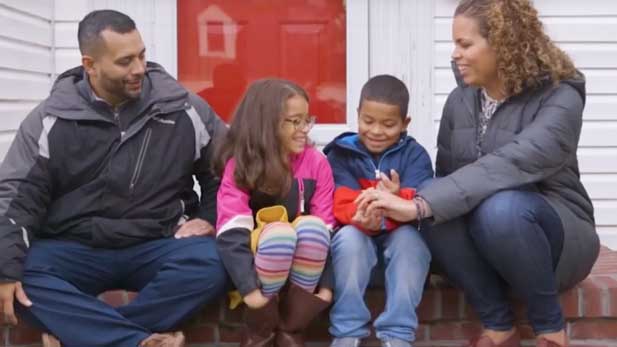 Family on the front porch.
Family on the front porch.Young children can have big feelings, but not yet know how to handle them. Parents and caregivers can learn how to use coaching as a simple tool for responding to a child’s upset to build her emotional competence.
Coaching can become a powerful way to help children become more self-aware, understanding their own feelings and how emotions impact their choices. It can also give them valuable practice in responsible decision-making. Parents who use a coaching approach express confidence that their child will succeed in their efforts. Rather than fixing a problem for their child, they focus on helping their child identify and better understand their feelings and then, think through their own solutions to a problem.
In the business of our days, parents can become excellent fixers. However, children need the opportunity, space, and guidance from parents to learn to understand the important role of emotions, to manage them in healthy ways and to make positive choices. Problems that pose a high safety risk are not appropriate for a coaching conversation since you will desire a particular outcome.
Watch as parents Doris and David help their young children navigate big emotions in this Parenting Minutes: Expressing Emotions video.
Here are some ways you can use “emotion coaching” to help your child:
Calm down first. Sometimes, young children can be so upset that they struggle to communicate how they feel. In these situations, focus on calming down before trying to talk about the problem. Proactively practice taking deep breaths or creating a safe base where your child can seek comfort and return to a greater state of calm. This will offer her the break she needs to be able to reflect further. Parents can also use this time to take some deep breaths themselves.
Ask about feelings and use reflective listening. “You seemed sad and frustrated after school. Is that right?” Help your child better understand what she’s feeling by listening for the feelings involved, articulating them specifically, and then asking if you are accurate. Use children’s books or posters with feelings faces to help identify feelings. Watch as Doris models these strategies in Parenting Minutes: Expressing Emotions.
Make the mind-body connection. Though big feelings produce bodily sensations like sweaty palms when you’re nervous or a red, hot face when you’re angry, children do not understand how their bodies relate to their emotions. You might say, “I noticed that your face was red. Were you feeling angry?” Making this mind-body connection helps deepen your child’s self-awareness.
Use open-ended questions without an agenda. After you’ve focused on feelings, you can reflect on the problem. Use the following questions as a guide to understanding the reason behind your child’s upset.
Parent: “What’s happened that upset you?”
Child: “Anthony took my pencil and wouldn’t give it back.”
Parent: “So what happened?”
Child: “I got mad at him and told him to give it back and then, the teacher got mad at me for yelling.”
Parent: “Anthony is your friend, right? What can you do or say tomorrow to make things better?”
Challenge to initiate thinking. In most situations, there are a number of possible solutions. You could ask, “What are some things you could do to feel better about Anthony?” We never want our children to feel trapped in a problem. Offer them practice in brainstorming multiple solutions to their problem and then guide your child to choose their best idea.
Summarize. Articulate back to your child what they plan to do without embellishing or adding your own opinions. “You were upset that Anthony took your pencil. You decided you’d bring in a new pencil with your name on it and tell him he could keep the one he took.” This will help your child solidify her own thinking and reaffirm that you’ve heard her.
Express genuine confidence. We as parents cannot possibly be sure of how things will turn out. However, we can be certain that our children can handle problems in their relationships. Telling them “Good. Go for it,” will offer the support they need.
This process of coaching with a child can be an authentic way to promote social and emotional skills that can help your child in school and life. Children can learn ways to calm down and label and express feelings. They can also gain confidence to solve problems. How can you envision using emotion coaching with your child?
Jennifer S. Miller, MEd. is author of the book “Confident Parents, Confident Kids; Raising Emotional Intelligence In Ourselves and Our Children — From Toddlers to Teenagers.” For twenty-five years, she has helped parents and educators become more effective with children through social and emotional learning. She learns from her own twelve-year-old son daily.

By submitting your comments, you hereby give AZPM the right to post your comments and potentially use them in any other form of media operated by this institution.